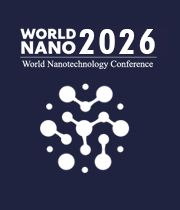Title : A broadband, angle-insensitive aluminium-based near infra-red absorber for protecting warfighters and sensitive optics technologies
Abstract:
Near-infrared (NIR) laser threats have become increasingly prevalent in modern military operations, posing significant risks to personnel and sensitive optics-based technologies. Effective protection against these threats requires advanced absorber materials capable of efficiently mitigating laser radiation. Currently, aluminium (Al) based absorbers are gaining attention due to their lightweight nature, costeffectiveness, and ease of fabrication. Current solutions use filters based on organic dyes or reflective films, which have limitations such as poor stability or angle-dependent performance. To address these challenges, a NIR absorber with broadband absorption, high stability, and angle-insensitive performance is needed. In this study, we present and numerically investigate a novel ultra-broadband incident angle-insensitive absorber via simulation. By employing nanostructured configurations of metal-dielectric-metal (MDM), it is achieved near-perfect absorption over the NIR spectrum. Integrating these nanomaterials into thin films enabled broad-spectrum NIR absorption while maintaining high visible light transmittance. Existing research on IR absorbers has predominantly focused on applications in energy harvesting and spectroscopy, with relatively limited exploration of their potential for defense-related uses.
In real-world military scenarios, laser threats can originate from unpredictable directions and rapidly changing angles due to the movement of platforms or personnel. An absorber insensitive to incident angle ensures consistent performance regardless of orientation or positioning, providing reliable protection under dynamic battlefield conditions. Additionally, Al based materials offer advantages in terms of weight reduction and mechanical robustness, which are critical for integration into protective gear and sensitive optical devices. The development of an Al-based NIR absorber with an angle-insensitive design represents a critical advancement for military operations. This technology addresses the limitations of traditional absorbers by providing consistent protection against laser threats from diverse angles and dynamic battlefield conditions. These absorbers can offer improved shielding for personnel and safeguard sensitive optical systems, ultimately enhancing safety and operational effectiveness.



